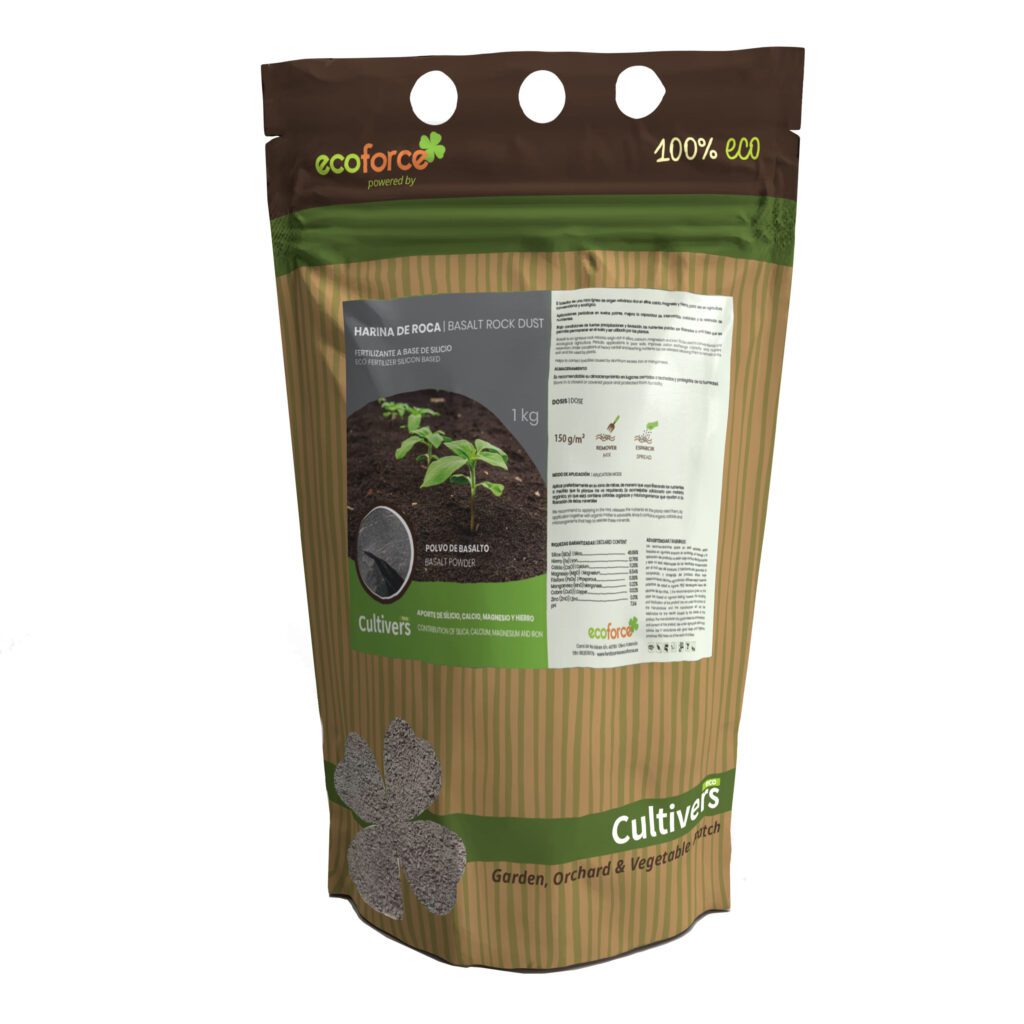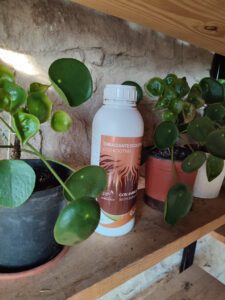Use of Flours in Organic Agriculture. Today we are going to tell you a little about our flours, they are made 100% from raw materials. Therefore, they are totally ecological and organic products suitable for use in Organic Agriculture.
In Cultivers we have 5 types of flours, each with different properties and benefits, but all aimed at improving both our soil and our crops. Here we are going to introduce you to our flours, their uses and properties in a simple way and that will surely help you when deciding whether to take the leap and start using our flours in your garden, garden bed, pot …
The use of Flours in Organic Agriculture is becoming more and more widespread in Europe and thanks to Cultivers it is starting to be used in Spain.
Fishmeal
It is an organic fertilizer with a high nitrogen and phosphorus content. Activator of balanced crop growth. Its application provides a quick and balanced supply of nitrogen plus phosphorus, which favors and stimulates the physiological processes of the plants. In plants, most of the nitrogen is located in high molecular weight compounds (proteins and nucleic acids). It is usually the macroelement that most frequently limits crop production.
Nitrogen deficiency results in chlorosis of old leaves, with a decrease in the biomass surface. Its nutrients are released gradually, covering the needs of the crop during its development. Its application increases the photosynthetic rate and ensures the supply of nitrogen and phosphorus at critical moments of vegetative growth. Its origin and manufacturing process means that its components are not washed away by rainwater or prolonged irrigation, thus avoiding the loss of nutritive material and the contamination of groundwater.
Basalt Rock Flour
Basalt is an igneous rock of volcanic origin rich in silica, calcium, magnesium and iron, for use in conventional and organic agriculture. Periodic applications in poor soils, improves cation exchange capacity and nutrient retention.
Under conditions of heavy rainfall and leaching, nutrients can be released at a rate that allows them to remain in the soil and be utilized by plants.
Phosphate Rock Flour
Phosphorus in plants is the primary element responsible for improving plant structure, guaranteeing correct and vigorous flowering, improving seed and fruit quality and stimulating root formation. The plant’s root system is responsible for exploring the soil and taking up water and mineral nutrients. An abundant root is one of the most direct and economical ways to increase the efficiency of nutrient absorption.
The relationship between a good root system and the adequate formation of vascular tissues is direct and together they establish one of the most important bases for the achievement of a higher productive potential. Phosphorus is an essential plant nutrient and its deficiency severely restricts the yield of agricultural crops. Substantial amounts of phosphorus are required for optimum plant growth and fruit development.
Bone Meal
The plant’s root system is responsible for exploring the soil and taking up water and mineral nutrients from it; an abundant root is one of the most direct and economical ways to increase the efficiency of nutrient absorption, thus reducing the extra NPK input. In addition to this, it is in the root where most of the hormones responsible for the regulation of plant metabolism in important processes such as cell division, cell thickening and elongation, fruit set and fruit growth, etc., are synthesized.
Calcium is involved in the resistance and adaptation reactions of the plant, it is one of the most important components of the cell wall, which provides permeability to it. It also improves the quality, consistency and post-harvest life of the fruit. Natural fertilizer ideal for planting trees and shrubs. It favors rooting and stimulates flowering and fruiting.
Blood Flour
In plants, most of the nitrogen is located in high molecular weight compounds (proteins and nucleic acids). It is usually the macroelement that most frequently limits crop production. Nitrogen deficiency results in chlorosis of old leaves, with a decrease in the biomass surface. It is an organic fertilizer with high nitrogen content, obtained from blood meal.
Its application increases the photosynthetic rate and ensures the supply of nitrogen at critical moments of vegetative growth. Its origin and manufacturing process means that its principles are not washed away by rainwater or prolonged risk, thus avoiding the loss of nutritive material and the contamination of groundwater. The most common form of incorporation is by direct application on the ground, being advisable to carry out burial work.
How I Use Flours in Organic Farming
The most common way to use the flours is very simple. We only have to spread on the soil the amount recommended according to the type of flour, and stir with a rake. With this, what we achieve is an effective incorporation into the soil. After spreading and stirring, we will have to give a watering, with this we help our flour to be integrated and released into the soil, pot or bed where we have placed it.
As you have seen, it is very simple to use flour in organic farming and its benefits are very great both in agriculture and in indoor plants, cactus or bonsai. We recommend them for all types of indoor and outdoor plants.
Now all you have to do is visit our store and start trying these raw materials.







